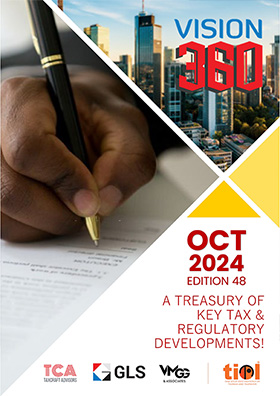CX - Valuation - s. 4 of CEA, 1944 - merely because in excise invoice amount of freight is not shown, excise duty cannot be charged on freight amount when fact of matter is that commercial invoice shows same - Appeal allowed: CESTAT
By TIOL News Service
MUMBAI, JUNE 11, 2016: THE appellant is engaged in the manufacture LPG self-closing valves [CSH 8481.80 of CETA, 1985]. Appellants are raising commercial invoices wherein in addition to the value shown in the central excise invoice, they indicated the amount of freight charges and collected the same from the customers. The said freight charges shown on commercial invoices are not included in the assessable value.
A SCN came to be issued demanding CE duty on the amount of the freight indicated in the commercial invoices and collected from customers for the period 1/7/2000 to 31/3/2003.
Both the lower authorities confirmed the demand leading to an appeal to the CESTAT in the year 2005.
The matter was heard in January this year.
The appellant submitted that freight is not shown in the invoice but is clearly indicated in the commercial invoice &it is sufficient compliance of Rule 5 of the Valuation Rules, 2000. Reliance is placed on the following decisions to justify the exclusion of freight from the AV: Ispat Industries Ltd - 2015-TIOL-238-SC-CX; Escorts JCB Ltd - 2002-TIOL-05-SC-CX.
The AR while reiterating the finding of the lower authorities emphasized that as per the statement given by the representative of the appellant the sale has not taken place at factory gate but at customers' premises, therefore, the transportation charges should be included in the assessable value.
The Bench observed thus -
"6. … We are of the view that merely because in excise invoice, the amount of freight not shown, the excise duty cannot be charged on the freight amount. As per Rule 5 of Central Excise Valuation Rules, 2000 the purpose for showing freight amount is to ascertain the amount of freight. In the present case though the appellant has not shown freight amount in the excise invoice but it is admittedly shown in the commercial invoice. On the basis of commercial invoice the freight amount can be identified. It is not the case of the Revenue that the amount of freight shown in the commercial invoice is not correct or it is not on account of freight therefore only for not showing the freight in the excise invoice excise duty cannot be charged thereon. The adjudicating authority, in the adjudication order has accepted that the sale is at factory gate therefore place of removal is the factory gate and as per Rule 5 of Central Excise Valuation Rules, 2000 freight amount is not chargeable to excise duty. Moreover during the period 1.7.2000 to 31.3.2003 the definition of place of removal was restricted to the factory gate or the depot. The premises of the buyer could not have been the place of removal. The costs incurred beyond the place of removal could not be included in the assessable value. Thus cost of transportation beyond the factory gate or the depot could not possibly form part of assessable value. Freight was incurred beyond the factory gate and, therefore, could not be part of assessable value."
The impugned order was set aside and appeal was allowed.
(See 2016-TIOL-1399-CESTAT-MUM)















